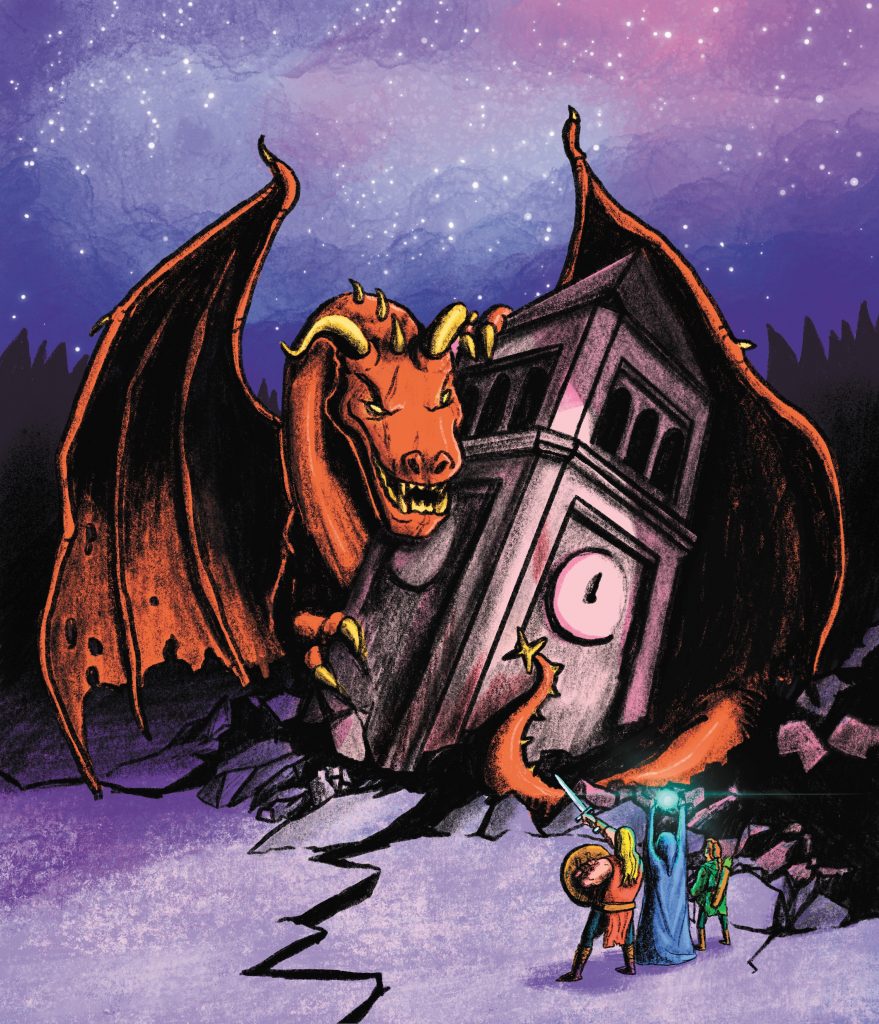Gateway to Adventure
The unforeseen resurgence of Dungeons & Dragons makes its way to the Inland Northwest

On a late summer morning, the Adrian family is investigating a cultist hideout when a fight breaks out.
“I’m actually gonna take my great axe, but not with the blade, and try and knock him unconscious,” says Joel Adrian, role playing as a towering barbarian named Gehl.
A 20-sided black die with bright red numbers clatters across the table. “Eighteen, plus seven to hit.”
“Yeah, go ahead and roll damage,” says his son Josh, who’s leading this session of Dungeons & Dragons as the all-knowing dungeon master.
“Six.”
Josh stands up and raises his arms aloft to gesture the wide swing of Gehl’s great axe and how much damage, determined by the dice rolls, his dad’s character does to the enemy at hand.
“Gehl spins his axe and — boom! — hits him,” Josh narrates. “Then Nieran runs around and spins and pulls out his longsword.”
The cultists don’t stand much of a chance against the hulking barbarian and one of his companions, a stealthy and fast dark-elf rogue played by the dungeon master’s brother-in-law, Kolby Wade. Also gathered around the kitchen table are Josh’s mother, Carrie, grandmother Reggie and sister Kayla. After the round of combat concludes in victory for the group of adventurers, the family of six takes a midday break for tuna melts and tomato soup.
Though the outcomes of this particular role-playing narrative will be utterly unique, the Saturday morning gathering of imagination and adventure is not. In an age when technology-driven entertainment has never been better — from blockbuster video games and virtual reality to the spectacular imagery of major film and television franchises — people are increasingly choosing their kitchen tables over screens to find creative, engaging escapes. As part of that trend, Dungeons & Dragons, the role-playing game of swords and sorcery first published in 1974, has returned to the spotlight of gaming culture at an unprecedented level.

Indeed, 2018 is on track to become the biggest year for Dungeons & Dragons, according to its publisher Wizards of the Coast, a Renton, Washington-based subsidiary of the toy behemoth Hasbro.
“While we can’t share specific sales information, we can say that 2017 was a record-breaking year for D&D, and 2018 is going to beat it handily,” says Greg Tito, Wizards of the Coast’s communications manager.
“One of the strongest indicators that the D&D audience is still growing is that introductory products like the Player’s Handbooks and Starter Sets were some of the bestselling of 2018,” Tito continues. “That means more people are getting into D&D for the first time.”
Dungeons & Dragons’ modern resurrection reflects what’s being seen in tabletop gaming as an industry, which includes board and trading card games. According to geek culture market tracking firm Internal Correspondence, sales of such games topped $1.5 billion in the U.S. and Canada for the first time in 2017, an increase of 8 percent over the previous year. Of the various gaming sub-genres the firm tracks, role-playing games were up last year by 22 percent, from $45 million to $55 million.
Future projections for the global board game market expect this trend to continue, with a projected overall growth rate of 23 percent between 2018 and 2022.